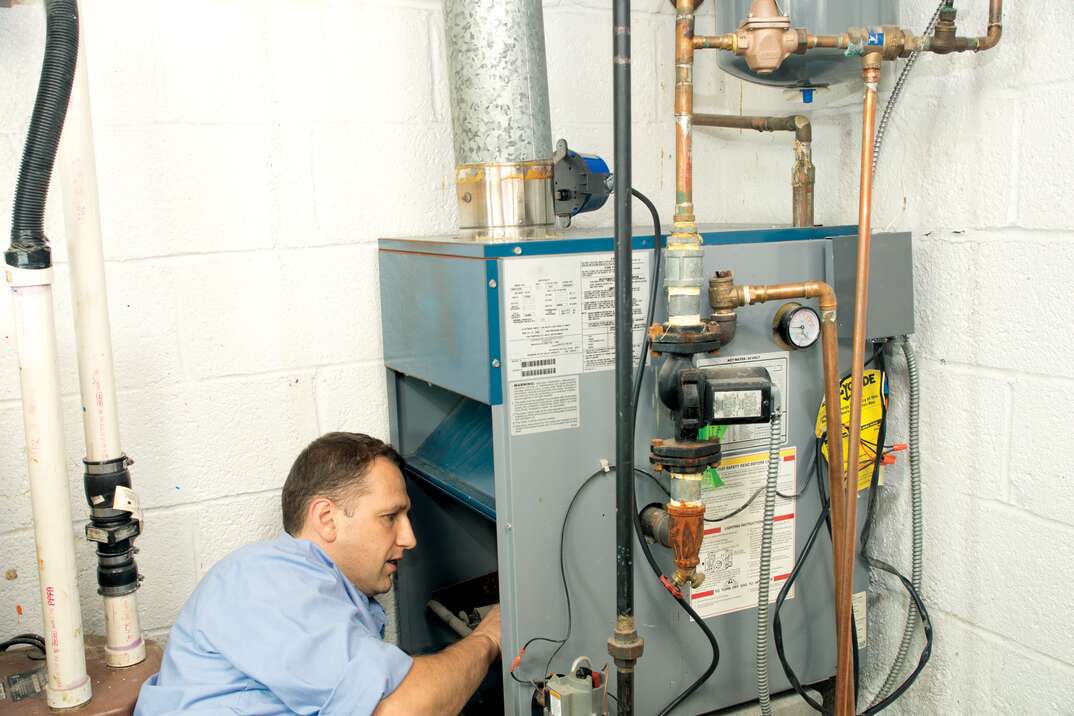Everything to Know About Your Furnace's Pressure Switch

When it comes to the safety and functionality of your home’s HVAC system, there's a small, yet essential device operating behind the scenes: the pressure switch. This essential component works quietly to ensure the furnace is operating safely and smoothly.
Read More Heating and Cooling Articles
So, what is a furnace pressure switch exactly? And, more importantly, how do you know if it’s working properly? We’ve got you covered.
What’s a Furnace Pressure Switch?
A furnace pressure switch is a safety device that is essential for the proper functioning of your heating system. Specifically designed to monitor the air pressure within the furnace to ensure that it is at a safe level for operation, furnace switches are generally found near the exhaust and ventilation system of the furnace.
How Does a Furnace Pressure Switch Work?
The function of a furnace pressure switch is to determine that the combustion process is operating properly and that the exhaust gasses are vented correctly. If there’s any form of blockage or the airflow is impeded in any way, the switch prevents the furnace from operating. It’s helpful to think of the furnace switch as a safety feature against the potential danger of a carbon monoxide buildup.
Furnace pressure switches are able to operate based on the principle of negative pressure. When the draft inducer fan draws combustion gasses out of the furnace, it creates what is called negative pressure or suction inside the ventilation system. Then, the pressure switch detects this suction and checks if there is enough of it to ensure that the airflow is going in the right direction. When the switch detects inadequate airflow, it will send a signal to the furnace’s control board, disabling the ignition process and preventing it from operating in unsafe conditions.
Types of Pressure Switches
There are several types of furnace pressure switches often used in HVAC systems. Here are a few of the most common types:
Single-Stage Pressure Switch
This type of pressure switch is generally found in a single-stage conventional furnace. A single-stage furnace has one pressure switch that’s connected to two hoses on the switch. One is for sensing pressure at the draft inducer motor, and the other is for sensing correct venting pressure at the condensate collector box.
Two-Stage Pressure Switch
A two-stage furnace typically has two pressure switches. These switches monitor the pressure and airflow at different stages of the heating cycle and allow for more precise pressure identifications.
Modulating Pressure Switch
Modulating furnaces have multiple stages that can adjust the heating of your home based on demand. Because of this, modulating furnaces may have three pressure switches to monitor and control the pressure and airflow for each stage of heating.
More Related Articles:
- Hiring an HVAC Tech? Here are 5 Top Tips
- What's in My HVAC Technician's Van?
- HVAC Out? 5 Common Causes and Quick Fixes for Each
- How Much Does an HVAC Filter Cost?
- HVAC Upkeep Costs: Everything You Need to Know
How Do You Test a Furnace Pressure Switch?
A fully functional pressure switch is crucial to maintaining a safe home. That’s why you should test your switch regularly to make sure it’s operating like it should. To test the switch, you’ll need a multimeter and a small screwdriver. Then, follow these simple steps:
Step 1: Safety First
Make sure the furnace is turned off and has been disconnected from the power source. You can do this by switching off the breaker switch in your home’s electric panel.
Step 2: Locate the Switch
Once the furnace has been shut off, find the pressure switch. Pressure switches are generally located near the blower motor or the draft inducer fan. If you can’t find it, refer to the manufacturer’s instruction manual.
Step 3: Remove the Wires
Using a small screwdriver, carefully remove the wires connecting the pressure switch terminals. Make sure you take note of which wires connect with which terminals for reconnection later.
Step 4: Use the Multimeter to Test
Turn on the multimeter and touch each probe to one of the switch terminals. The multimeter should read 0 — or close to it — indicating no resistance. If you have a higher reading, that means the switch isn’t working properly and needs replacing.
Under Pressure
Your furnace’s pressure switch is a small but important device that plays a crucial role in keeping your heating system — and your home — safe and secure. By understanding how the pressure switch works, you can take steps to make sure your pressure switch is functioning as it should.
Elocal Editorial Content is for educational and entertainment purposes only. Editorial Content should not be used as a substitute for advice from a licensed professional in your state reviewing your issue. Systems, equipment, issues and circumstances vary. Follow the manufacturer's safety precautions. The opinions, beliefs and viewpoints expressed by the eLocal Editorial Team and other third-party content providers do not necessarily reflect the opinions, beliefs and viewpoints of eLocal or its affiliate companies. Use of the Blog is subject to the
Website Terms and Conditions.The eLocal Editorial Team operates independently of eLocal USA's marketing and sales decisions.



